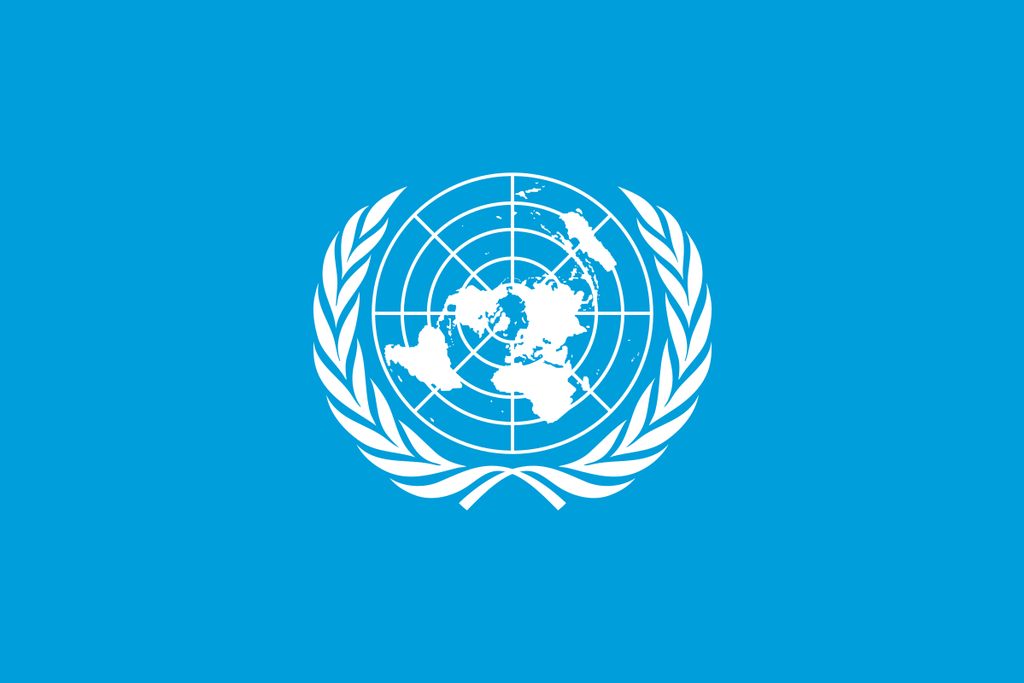
Flag of the United Nations.
“Issues of leadership were significant during the reporting period. ISIL core continues to be under pressure, with attrition in its leadership and depleting resources. It has proven resilient, but morale is low.”
In mid-February, the United Nations released its biannual report offering a broad overview of the state of the Islamic State, al-Qaeda, and the Taliban. Created with inputs from the intelligence analysis of participating UN member states, the report is a useful analysis of the state of play of transnational jihadist movements. As regards the Islamic State, the UN report underscored that the global terrorist organization is making its greatest gains in Sub-Saharan Africa,[i] via its West Africa (Lake Chad Basin) and Sahel (Niger-Mali-Burkina Faso) affiliates. The report also noted the importance of Somalia in the Islamic State’s funding efforts. Outside of Africa, it asserts that violence is surging in the Islamic State’s so-called Khorasan Province (Afghanistan-Pakistan), notably with attacks on the rival Taliban. The report emphasizes that the Islamic State’s growth and resiliency are being most clearly demonstrated outside of its original core bases of Iraq and Syria, where it is known as the Islamic State of Iraq and the Levant (ISIL). As it describes, “ISIL core continues to be under pressure, with attrition in its leadership and depleting resources. It has proven resilient, but morale is low.” The UN report continues to underscore that the current epicenter of terrorist violence has shifted away from being centered in the Middle East, and is now most heavily weighted in Africa and South Asia.[ii] As global focus has moved away from terrorism and towards near-peer competition, the overriding implication is that the global terrorist threat has not disappeared.
Source:
United Nations Security Council, “Letter dated 13 February 2023 from the Chair of the Security Council Committee pursuant to resolutions 1267 (1999), 1989 (2011) and 2253 (2015) concerning Islamic State in Iraq and the Levant (Da’esh), Al-Qaida and associated individuals, groups, undertakings and entities addressed to the President of the Security Council,” United Nations Security Council, 13 February 2023 . https://www.un.org/securitycouncil/sanctions/1267/monitoring-team/reports
The threat from Al-Qaida, ISIL (Da’esh) and affiliated groups remains high in conflict zones and neighbouring countries. It remains relatively low in other areas, but both groups continue to aspire to project threat.
Africa has emerged in recent years as the continent where the harm done by terrorism is developing most rapidly and extensively. Two of the three most dynamic ISIL affiliates are in Africa, and the continent has seen the greatest growth in ISIL affiliates, with several groups expanding their radius of influence often across national borders. ISIL continues its efforts to exploit regional and local grievances throughout the continent for propaganda purposes, publicizing related events and attacks to enhance its global footprint. Equally, Al-Qaida’s most successful affiliate in Somalia, Al-Shabaab, continues to grow in strength and reach as the group’s most brutal affiliate, and Jama’a Nusrat ul-Islam wa al-Muslimin (JNIM) has been able to expand its operations in West Africa and the Sahel.Issues of leadership were significant during the reporting period. ISIL core continues to be under pressure, with attrition in its leadership and depleting resources. It has proven resilient, but morale is low. The group is strengthening through its affiliates beyond Iraq and the Syrian Arab Republic: in Africa and with the aggressive agenda of Islamic State in Iraq and the Levant – Khorasan (ISIL-K) in Afghanistan, whose rivalry with the Taliban will continue to have a destabilizing effect in Afghanistan and the region. Most of the attacks by ISIL-K are against the Taliban. A new leader of ISIL was killed after barely eight months in charge. The function of leader has become almost totemic, a rallying point for the wider group. For the time being, ISIL core continues to produce leaders who meet this need, and members of affiliates pledge allegiance swiftly and without question, not anticipating close operational direction. Member States’ predominant view is that Sayf al-‘Adl is now the de facto leader of Al-Qaida, representing continuity for now. But his leadership cannot be declared because of Al-Qaida’s sensitivity to Afghan Taliban concerns not to acknowledge the death of Aiman Muhammed Rabi al-Zawahiri in Kabul and the fact of Sayf al-‘Adl’s presence in the Islamic Republic of Iran. His location raises questions that have a bearing on Al-Qaida’s ambitions to assert leadership of a global movement in the face of challenges from ISIL.
Notes:
[i] For more on the Islamic State’s history and evolution in Africa, see: Jason Warner et al., The Islamic State in Africa: Emergence, Evolution, and Future of the Next Jihadist Battlefront, Hurst/Oxford University Press, 2022.
[ii] For more on how Africa has taken on new importance in the global jihadist landscape, see: Tricia Bacon and Jason Warner, “Twenty Years After 9/11: The Threat in Africa – The New Global Epicenter of Jihadi Terrorism,” CTC Sentinel, 14 (7), September 2021. https://ctc.usma.edu/twenty-years-after-9-11-the-threat-in-africa-the-new-epicenter-of-global-jihadi-terror/
Image Information:
Image: Flag of the United Nations
Source: https://commons.wikimedia.org/wiki/File:Flag_of_the_United_Nations.png
Attribution: Wilfried Huss, Public Domain, via Wikimedia Commons
